Observatorio tecnológico del 27 de enero al 2 de febrero
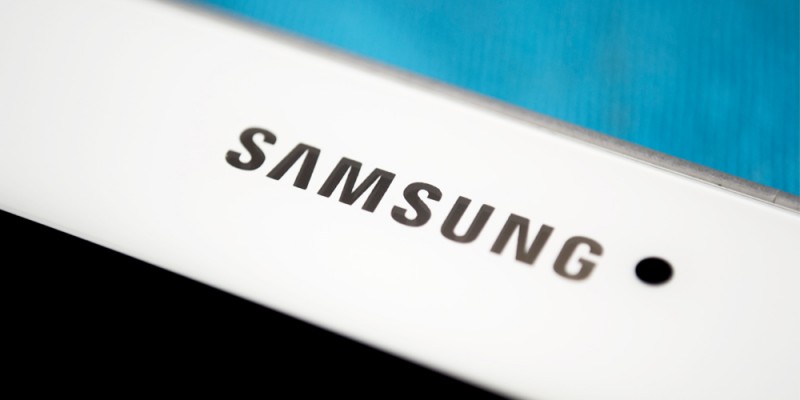
If technology firms were characters from "beat 'em up" videogames, then patents would be their special weapons for attacking one another, with each trying to defend what's theirs and weaken their rivals. However, Samsung and Google have decided to join forces by signing a patent cross-licensing agreement, and there's no prizes for guessing which company they have in their crosshairs. A statement posted on the Samsung website sheds more light on the agreement. Over the 10-years that the deal will run, the two "most important" companies for Android will be able to save on legal costs and court time and instead focus on other aspects of their business: by working together under deals such as this, the companies will be able to avoid lawsuits and concentrate on innovation. Remember that Samsung and Apple have both been constantly in and out of court in recent years. Google bought a significant number of patents when it acquired Motorola. Combining these with Samsung's patents, the company should now have a firmer footing in the event of further litigation. The other obvious inference we can make from the deal is that Samsung will remain an Android partner. There has always been talk of the two companies needing to "iron out their differences". It seems they are now ready to find common ground and work together to ensure "stable" growth for Android (in terms of jurisdiction).
From now on Wikipedia will include voice recordings from famous people in Wikipedia biographies, allowing users to hear their voices and the correct pronunciation of their names. A statement from the website said that the Wikipedia Voice Into Project (WikiVIP) would compile short sound clips of around 10 seconds in length, building a giant sound library of the voices of the most important figures of our time. All this in an environment, the Internet, that is acutely focused on images and video, but perhaps less so on audio. The project was launched by British comedian Stephen Fry, who happened to meet one of Wikipedia's editors, Andy Mabbett, in New York and was convinced to record a sound clip for his own Wikipedia page. The goal is not just to collect celebrity voices, but also those of any person -scientists, professors, writers, chefs- whose careers are documented in a Wikipedia article. The team at the online encyclopedia is therefore encouraging any users who personally know people who have a Wikipedia entry to record their voices to sound files and load them to the site. The platform even allows the subjects of articles themselves to record their voices and load them to the Wikipedia site. The astronaut Charlie Duke has also signed up to the initiative; you can hear his voice at this link. The Wikipedia editor Andy Mabbett is also working with the BBC to extract voice clips from BBC archives. This is the first time that the BBC has openly licensed any of its clips. So far three hundred sound clips have been earmarked, with just half having been uploaded to their corresponding Wikipedia articles so far. Once of the voices is that of Tim Berners Lee.
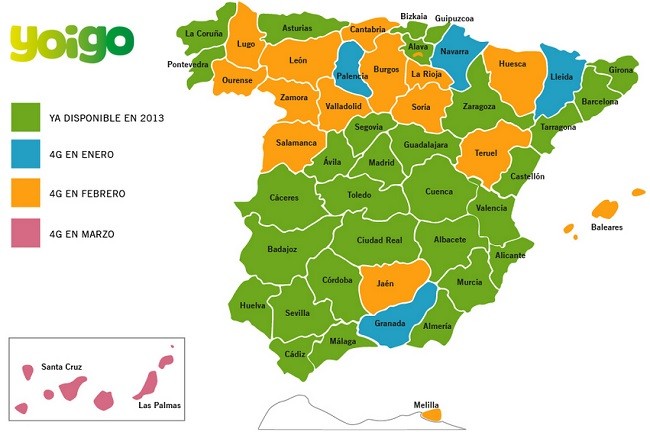
Yoigo still has Spain's largest 4G network, mainly because, unlike other operators, it hasn't been forced to wait for frequency to be freed up as part of the country's digital dividend, which should be the starting pistol for other carriers to roll out their networks once the 800 MHz band becomes available. Meanwhile, Yoigo will be the first operator to reach every Spanish province (except Ceuta) with a 4G network. Its network rollout plan has been revealed in a coverage map for up to March 2014. Although the company is still somewhat behind its initial schedule, this timeline should see Yoigo cover all of Spain's major conurbations. The schedule also states in brackets the number of base stations that the company plans to install:
January 2014
- Navarre: Pamplona (15).
- Palencia: Palencia (6).
- Lleida: Lleida (5).
- Granada: Granada (47).
February 2014
- Lugo: Lugo (9).
- Ourense: Ourense (3).
- León: León (8).
- Zamora: Zamora.
- Salamanca: Salamanca (12).
- Cantabria: Santander (23).
- Valladolid: Valladolid (24).
- Burgos: Burgos (18).
- La Rioja: Logroño (8).
- Soria: Soria.
- Huesca: Huesca.
- Teruel: Teruel.
- Jaén: Jaén (11).
- Balearic Islands: Palma de Mallorca (69).
- Álava: Vitoria (15).
- Melilla: Melilla (1).
March 2014
- Las Palmas: Las Palmas de Gran Canaria (41), Telde (6).
- Santa Cruz de Tenerife: Santa Cruz de Tenerife (21), San Cristóbal Laguna (17), Arona (3).
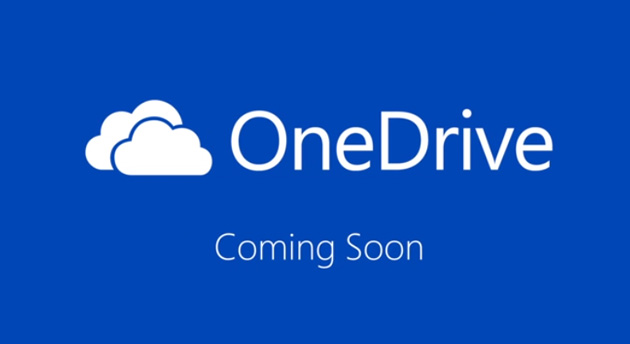
Microsoft had been locked in litigation over use of the name SkyDrive in the UK for some time, until last summer when it finally lost the battle. The judge ruled in favor of British Sky Broadcasting Group (BSkyB) and the Redmond-based company was ordered to drop the "Sky" prefix from the name. Now, several months after that ruling, Microsoft has unveiled the new name for its cloud storage service: OneDrive. The company has already registered the onedrive.com domain name, which at present only features a "coming soon" message. The company also launched a blog for the service and has posted a promotional video to YouTube. The name OneDrive seeks to convey the idea of users having a single place for all their important files and documents, ensuring permanent availability from any device. The name also fits perfectly with the recently unveiled "One Microsoft" strategy. SkyDrive and SkyDrive Pro users need not be concerned about the name change. The Redmond company says the service will continue as normal and only the name will change, with the icon and the brand image remaining intact.
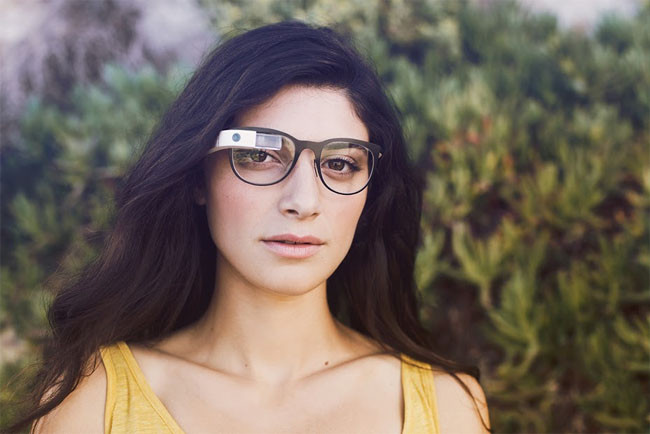
Users who need prescription lenses will no longer have any problems using Google Glass. This week Google will start selling the first frames compatible with its augmented reality glasses that can also carry prescription lenses. The “Titanium Collection” comes in four different frame designs, all made from very lightweight titanium. The for most popular designs were chosen. The frames carry a price tag of 225 dollars and are compatible only with the latest model of Google Glass. These new frames for prescription lenses simply clip onto the new Google Glass, so users can alternate the designs at will and combine them with the five available colors of Google Glass. As well as its new models for prescription lenses, Google has also launched two new classic sunglasses models for the Google Glass system. Google Glasses are still only sold in the United States and by invitation as part of the Glass Explorer program. This year they are set to go on sale to the general public and in more countries.
A smartphone that lets you choose the operating system you prefer is just around the corner. The Spanish firm Geeksphone has unveiled the full specifications for its next high-end device, which will officially support both Android and Firefox OS. Geeksphone Revolution is the new product from the Spanish company, which has not launched an Android device for several years. Geeksphone was the first European manufacturer to release an Android-powered phone and is now set to become the world's first to market a device that is compatible with both Android and Firefox OS. The Geeksphone Revolution comes with a 4.7 inch screen, an IPS qHD panel (960 × 540 pixels), a 1.6 GHz dual-core Intel Atom Z2560 processor, 1GB of RAM and 4 GB of internal memory, which can be boosted to 32 GB with microSD cards. It has an 8 megapixel rear camera with LED flash and recording in 1080p@30fps, as well as a 2 megapixel front camera. In terms of connectivity, the device will be 3G, with WiFi N, Bluetooth 3.0 and GPS. It features all the usual Android sensors, including an accelerometer, compass and proximity and light sensors. The dimensions of the Geeksphone Revolution are 135 × 68.4 × 9.8 mm, while it comes with a 2000 mAh battery. The phone's weight has not been revealed. The device will carry Este Geeksphone MultiOS technology, which allows users to choose the operating system that they prefer to use with their Geeksphone Revolution. The phone will come with Android as standard, but the manufacturer's tools make it easy to change to Mozilla's Boot2Gecko (Firefox OS) or other operating systems supported by the community. Once the operating system has been installed it will stay up to date using the OTA 1-click system. The Geeksphone Revolution will go on sale over the next few weeks, sometime this first quarter. No launch date has been announced yet, but you can sign up on the firm's website for a notification when pre-orders are being taken. Nor did the firm announce a price for the new phone, but it is expected to cost around 200 euro. Previous reports have indicated that it will be launched with Android 4.2 (Jelly Bean) but with an upgrade to Android 4.4 (KitKat) following shortly.
You wouldn't think that Samsung needs more stores. The company's products, from the most prosaic domestic appliances to the latest wearables, can easily found at retailers large and small the world around. But there is one thing that none of these stores can offer: brand positioning. Samsung is determined to take its brand image to the next level, opening its own-brand stores in European shopping malls as part of a partnership with Carphone Warehouse. The South Korean manufacturer and the British chain of cell phone stores have announced that they will open 60 stores under the Samsung brand over the next three months, some by rebranding existing Carphone Warehouse stores and others as brand new premises. The stores promise to have a premium look and feel and will stock "the full range of Samsung cell phones, tablets, laptops and wearables", bringing the gospel according to Samsung to shoppers in Spain (where Samsung already has three stores run by CW), Portugal, UK, Ireland, Germany, Sweden and the Netherlands.
Not a day goes by without this topic being discussed eagerly on gossip forums. Nintendo possibly developing games for smartphones, the mortal enemy of its mobile consoles, sounds like a winning idea all round, and that's exactly what's going to happen if recent statements from the company's Chairman are anything to go by. The Japanese firm has repeatedly stated that it has a clear strategy for its games: the titles will remain exclusive to Nintendo consoles. However, these games are not keeping the company profitable or stopping it from losing market share, so Nintendo is seeking new revenue streams to tap.
One possibility is a crossover service based on consoles and user accounts, as explored by PlayStation and Xbox.
In his statement, Iwata said that there would be Nintendo applications for mobile devices, but he didn't give much away about the company's plans. What is interesting is Nintendo's admission that its needs more users than just console owners. A development team is already working on launching applications for smartphones and tablets. Nintendo's approach continues to revolve around a firmly-established user base, while it is seeking to offer services linked to accounts and communities that tie in with its games. There is no evidence as yet that any of the major Nintendo titles will appear as we know them on smartphones, but we do expect a more flexible stance with regard to licensing, with Nintendo allowing its top characters and popular sagas to be used on phones. The first results from this new approach should be seen in 2014.
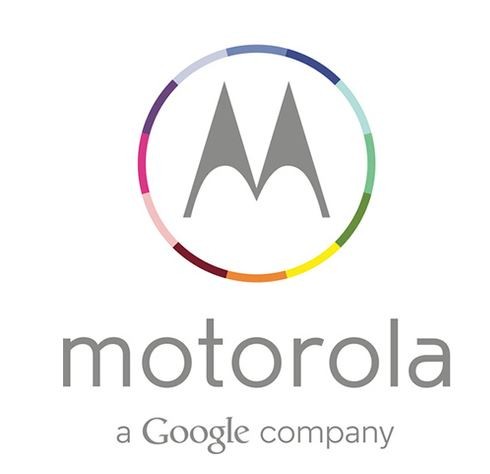
What started out as a rumor has finally become a reality; Lenovo has acquired Motorola for just under 3 billion dollars. The news came as genuine shock to the industry, as Google paid 12.5 billion dollars for Motorola Mobility back in August 2011. Since then the Mountain View team has completely overhauled the company and its product portfolio, catapulting it from a mediocre player to a market leader. While the deal still needs to be green lighted by U.S. and Chinese authorities, the agreement between Google and Lenovo will give us plenty to talk about over the next few months. In fact, the deal may represent a tipping point in the mobile device segment, particularly as far as the Android ecosystem is concerned.
Google, via Motorola, demonstrated to manufacturers a new way of doing things. Motorola had been a company in the doldrums before Google stepped in. In the 2 years since, Motorola has been transformed from a mediocre player with zero market clout to the creator of the most talked about smartphones of 2013: Moto G and Moto X. The Google-driven shake up at Motorola demonstrated something extremely important for the Android ecosystem: a compelling low end phone is possible. In an official statement, Larry Page wrote something very interesting in this regard. Google, via Motorola, revitalized the Android ecosystem by developing the Moto X and Moto G; they raised the bar and caused other manufacturers to rethink their approach of excessive user interface layering, which usually makes for an awful user experience. Android needed Google to take the bull by the horns and lead device manufacturers by example. They did just that with Motorola, launching high-quality and well-priced products that featured great user experience (and none of the excesses that come with layer upon layer of interfaces). In a week in which there was talk of the "demise" of the Nexus range, as well as a focus on "stock Android" devices, i.e. Play Editions; the sea change caused by Motorola within the Android ecosystem is evident. The Android ecosystem needed Google to shake things up, and it did just that through Motorola and its patents. Yes, Android had come represent a simple "foundation" on which manufacturers built their own user experience, with their own applications and developments. The platform was slowly pushed into the background. In fact, it had become so pedestrian that Android did not even have its own stand at MWC 2013. Once it had successfully restructured the Android ecosystem, Motorola quickly became something of a burden to Google. The smartphones market is highly competitive and it is difficult to revolutionize an industry with a portfolio that includes just 2 devices (no matter how good they might be), especially when measured against the arsenal of products mobilized by Samsung, Sony, HTC, Huawei and ZTE. Motorola Mobility had become a financial encumbrance on Google's income statement. The Google subsidiary accumulated operating losses of 248 million dollars and only generated revenue of 1,184 million dollars in the third quarter of 2013, and I very much doubt that the fourth quarter figures due to come out tomorrow will be much better. Google will focus on running Android as a platform and leave smartphones to manufacturers. There was always a lot of talk about Motorola's greatest assets being its patents portfolio. Indeed, while Google sold Motorola for 25% what it cost the company two years ago, the Mountain View team will hold onto the patents, selling only Motorola's smartphone development business. The patents are the prized asset and will stay at Google; indeed they are set to be the cornerstone of a new era for the Android ecosystem. Motorola's patents allowed Google to greatly improve the platform and the team at Mountain View will no doubt be focusing on this going forward. Google is to concentrate exclusively on developing Android as a platform rather than developing smartphones. This does not mean the firm will be giving up the hardware market altogether, simply that its goal is innovation and it sees greater returns in areas such as applications for the home (Chromecast), wearable devices (Google Glass) and disruptive technologies such as Project Ara (a project that it will continue to pursue, after Motorola's advanced technology division joins Google's core Android team). By focusing on Android as a platform, Google will be able to channel its efforts into overseeing the Android ecosystem while its partners can concentrate on incorporating the platform on their devices. And if there were any doubts that Google was the captain of the Android ship, even Samsung looks like it has returned to the "herd" and turned away from the potential departure hinted at by the new Magazine UX interface. In fact, the patent sharing rapprochement between Samsung and Google is truly a sign of how hard Google is working to reshape the Android ecosystem. If you need to get along with your partners, it might not be a good tactic to compete against them as a manufacturer. And what's in the purchase for Levono? It is difficult to say whether Google will recover its investment via the patents that it has kept for itself, but what is clear is that Lenovo spent 25% the sum that Google paid out for Motorola just over 2 years ago. Lenovo has recently been highly active buying up "loss making businesses" and has established itself as the world's largest PC maker. In 2005 the Chinese company bought up the IBM PC division and gradually swallowed up the NEC computer business (2011). It even recently snapped up IBM's low-end server business. Although Lenovo was founded in China it has its eyes set firmly on the U.S. market. In fact the company already has a significant position in the market and even an official headquarters (which used to be home to the IBM PC division), as well as U.S. shareholders (IBM for example). Lenovo already made smartphones but its impact on the market has been limited; it might have its niche in China and emerging markets, but in Europe, the U.S. and Latin America it has been largely overlooked. Lenovo has done a good job managing portfolios that it has acquired and could do great things under the Motorola brand. The Moto X and Moto G models both revitalized the markets that Lenovo is targeting; markets where the Motorola brand has worked well in the past and where Lenovo will want to build on that success. Lenovo now intends to leverage its brands, using the "home brand" in China while in the United States and Latin America it will operate under Motorola (for optimal identification with its target market). Over the years Lenovo has shown itself to be very adept at managing the product portfolios that it has snapped up, particularly its top-end laptops range. Motorola will allow the firm to exploit a brand that carries plenty of potential, and if they keep up the standards achieved with Moto G and Moto X the company could have a very bright future. Furthermore, Google has opened its collection of patents to Lenovo, making for an even sturdier launch pad for its great leap into Europe, the U.S. and Latin America.
A few weeks ago Google bought Nest Labs. The first thing that most of us assumed was that company was interested in adapting its software for use in thermostats and smoke detectors. Which shows how limited our thinking is, because Google may have much bigger plans for Tony Fadell and his team. Sources that could not be revealed told TechCrunch that Google wants Tony Fadell, CEO of Nest, and his team to be the company's hardware division. This promises a future of Google products in which design is paramount (both software and hardware). Bear in mind that Fadell worked for Apple on two of the most important products in the history of technology and industrial design: the iPod and the iPhone. The article goes on to say that Fadell is considered "one of the best executives that understand both hardware and software". He is equally comfortable working on one as the other. Nothing is clear as yet, but Google seems to have set its eyes firmly on the hardware segment, with the report describing the Motorola purchase as a "false start". Google wooing these particular companies certainly seems no coincidence, and the reported approach would make the company's interest in Motorola's patents more logical. Perhaps the Nest team will get working on a new smartphone or tablet. The possibilities are truly endless and only time will tell. Someone with Tony Fadell's vision and track record could be just the person to continue Google's success in the device market. Bear in mind that Fadell lured key engineers away from Apple to the Nest team, which is one reason why Google was so interested in the company. The parts of the puzzle are starting to emerge. We just need to see how they fit together to produce the end result.
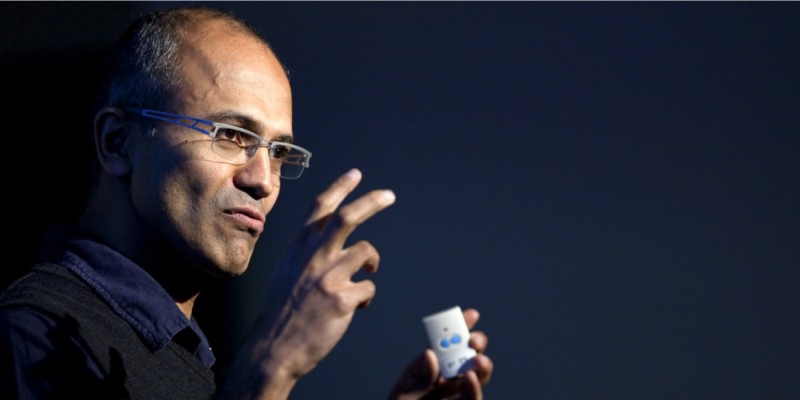
On August 23, 2013, Steve Ballmer announced his retirement as CEO of Microsoft, marking the start of companywide reorganization and some late summer drama. Who would take over as CEO? Five names stood out as likely successors, with one clear favorite: Stephen Elop, seen as some as a traitor and a Trojan Horse working to bring down Nokia from the inside, to then sell it to Microsoft. If that wasn't enough, two weeks later Microsoft announced its intention to buy Nokia, pending authorization. Another candidate, seen as less likely, was Tony Bates, Deputy Chairman of the Redmond-based company. While the carousel of potential new CEOs was ongoing, a new name emerged: Satya Nadella, head of cloud services at Microsoft, might be the new chief executive. And these rumors didn't just come from anywhere, they came from Bloomberg. Satya Nadella is 46 years of age and has spent 22 of those year with Microsoft, having joined the firm in 1992, so he is very much a known quantity to the company. This may be why he was chosen over other candidates who seemed to have a stronger claim to the position, such as the aforementioned Stephen Elop and Tony Bates, as well as Alan Mulally from Ford, Steve Mollenkopf from Qualcomm and Hans Vestberg from Ericsson. He previously spent time with Sun Microsystems. In his current Microsoft post, Satya Nadella heads up Microsoft's cloud services and tools, such as Windows Azure, Windows Server, SQL Server, Visual Studio and System Center, as well as user products such as Office 365, Bing, SkyDrive, Xbox Live and Skype. He is not a prolific Twitter user, having made just 25 tweets in the last five years. The race for the CEO post at Microsoft is reaching its end, more than five months after Ballmer announced his retirement. The appointment has not yet been made official, but this time there is weight behind the rumors.
